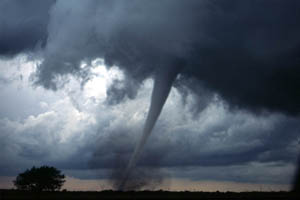Beating Heat, Avoiding Injury Key as Fall Sports Seasons Arrive
| By Krush Digital | 0 Comments
August is here, bringing football season along with it, though the temperatures might try to convince us otherwise. Whether your child is competing on the gridiron or in one of the other fall sports offered by schools and youth programs in your community, it is wise to keep them safe through smart practice habits.
I help coach youth football and the attention paid to player wellness in the modern era is impressive.
A friend of mine, Ron Lancaster, has witnessed the progress throughout a 47-year career as a high school football coach, including tenures at Enid, Jenks, Sallisaw, Muskogee and Broken Arrow and now as a youth coach for his grandson’s seventh-grade team in Union Schools.
“Everything has changed,” Coach Lancaster said recently. “I played all through high school, into college, and we never had water. About 25 years ago, we started realizing that water was essential. Kids can’t do without it.”
Today, Coach Lancaster’s two-hour practices include five-minute water breaks in the shade, every 15 minutes. The team will spend the first week or so practicing only in shorts and t-shirts to acclimate to the heat before putting on pads. To keep from overworking the players, Coach Lancaster alternates low-impact activities, such as a walk-through of plays or instruction on techniques, with high-impact activities like sprints, agility drills and full-contact.
Tom Lott is commissioner of the Indian Nations Football Conference. Mr. Lott said all coaches in the league must be certified by USA Football (a youth program affiliated with the National Football League), and notes that their coaching education includes information on player welfare.
“It is not only Xs and Os, but information on avoiding concussions, heatstroke and such,” Mr. Lott said.
Mr. Lott noted emphasized that getting the players acclimated to the temperatures is an important part of the first few practices, especially when so many children have spent this sweltering summer in air-conditioned comfort. Even so, Mr. Lott canceled two days of practice recently because the anticipated conditions might be especially dangerous.
“We sent an e-mail blast to 10,000 players and their parents and coaches that practice was canceled for all teams,” Mr. Lott said. “With this heat index, it’s just not worth the risk.”
The Indian Nations Football Conference mandates water breaks every 20 minutes, according to Mr. Lott, and instructs coaches to “push” hydration, telling athletes to drink more water even than the child thinks he might want or need. Coach Lancaster noted his practices include misters, ice buckets and iced towels.
“You can drink sports drinks before or after practice, but during practice, drink only water, and there’s no limit anymore on how much water,” Coach Lancaster added. “In our league, the INFC, everybody, and I mean everybody, is conscious of these temperatures.”
Apart from the heat, learning to make contact properly with other players helps keep kids safer on the football field. Players who are blocking or tackling should keep their heads up and neck bowed, Coach Lancaster said, to help avoid concussions and crippling spinal injuries.
“Union Schools probably say it best: ‘Always play football with your eyes,’” Coach Lancaster said. “Never hit anyone you can’t see.”
Of course, athletics are taking place far beyond the football field as school resumes and youth programs enter their fall schedules. Whether your child runs cross-country, plays softball, tennis or golf, cheerleads, or is indoors playing volleyball, staying hydrated and safe are the top priority.
Heatstroke can strike with little warning, even after a short time of strenuous exercise. Symptoms can include irrational speech or behavior, red, hot and dry skin, a rapid and h5 pulse, throbbing headaches and dizziness, nausea or even unconsciousness.
BlueCross BlueShield of Oklahoma notes that many sports injuries result from a lack of rest and recovery time. The insurer encourages athletes to “listen to their bodies.” A little soreness in muscles is common when exercising, BlueCross BlueShield notes, but pay special attention to those parts of the body that are sore over a period of days, particularly joints. Ease off the activities that stress these areas.
A BlueCross BlueShield of Oklahoma official adds his own warning about the heat.
“With the current Oklahoma weather, it’s important for athletes or anyone else who may exercise outside to pay attention to the fluids they consume to avoid dehydration or heat illnesses,

